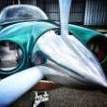N9156Z Minnesota crash final report
-
Members Online
- 1980Mooney
- hubcap
- amillet
- ohdub
- MaxwellSmart86
- AgFlyer
- pkellercfii
- Micah Shamash
- enginenerd
- jamesyql
- DXB
- Teddyhherrera
- N201MKTurbo
- sdmideas
- 201Mooniac
- Airterrys
- alextstone
- jetdriven
- Z W
- Mmrkulic
- Ragsf15e
- Marc_B
- good2eat
- MooneyMack
- Lax291
- Slick Nick
- phxcobraz
- Hank
- Will.iam
- DanM20C
- Aerodon
- 52Yankee
- CCAS
- Steve Dawson
- kortopates
- rturbett
- mmcdaniel33
- Planegary
- JB2000


Recommended Posts
Join the conversation
You can post now and register later. If you have an account, sign in now to post with your account.